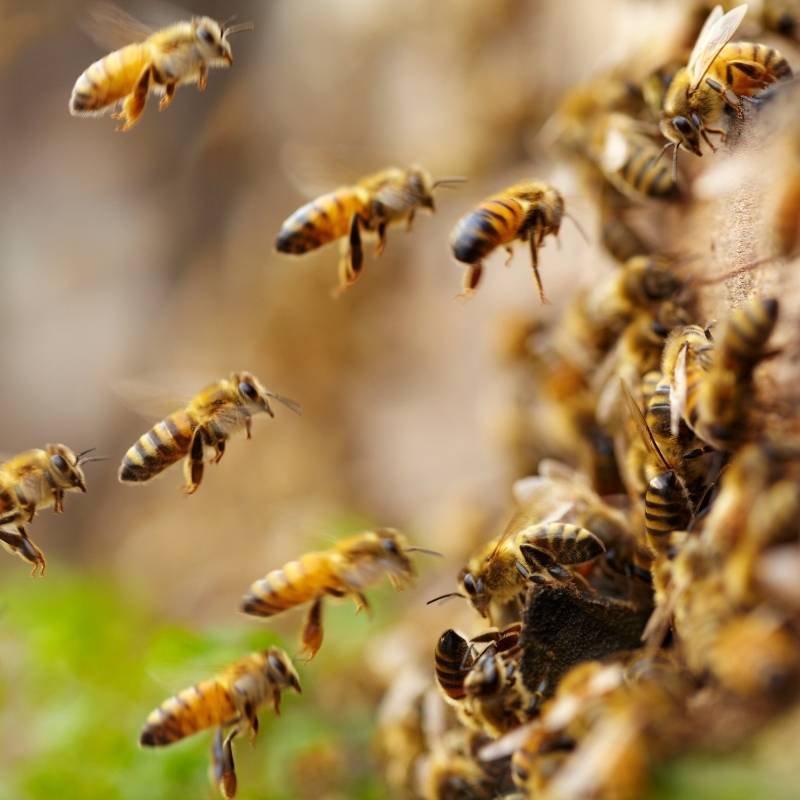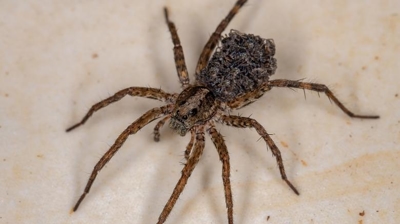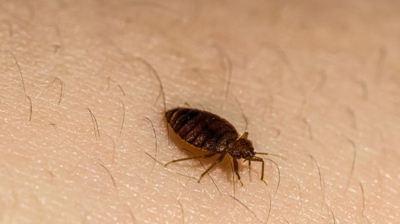
Are Bees Harmful?
While bees are overwhelmingly beneficial to ecosystems and human agriculture, there are certain situations in which bees can be considered harmful:
- Defensive Stings: Most bee species are not aggressive by nature, but bees will sting if they feel threatened or if their nest is disturbed. Honey bees, in particular, are known to defend their hives vigorously.
- Pain and Swelling: Bee stings can cause localized pain, redness, and swelling, which is uncomfortable but generally not serious for most people.
- Anaphylaxis: For individuals with bee sting allergies, even a single sting can trigger a severe, potentially life-threatening allergic reaction known as anaphylaxis. This is a medical emergency that can result in shock, difficulty breathing, or even death without prompt treatment.
- Swarm Attacks: Africanized honey bees are a hybrid of African and European honey bees. They are more defensive and aggressive than other bee types. These bees are known for their heightened sensitivity to disturbances and their tendency to swarm and chase perceived threats for long distances.
- Structural Damage: Bees, especially carpenter bees, can cause physical damage by boring holes into wood to create nests. Over time, this can weaken structural elements of buildings, fences, decks, and eaves.
- Unwanted Colonies: Honey bees may establish nests inside walls, attics, chimneys, or other cavities in buildings. These nests can become large and heavy, cause stains from dripping honey, and attract other pests such as ants, wax moths, and rodents.
Learn more: Do Bees Bite? || What Do Bees Look Like? || What Do Bees Eat? || How Do Bees Fly?
Bee Removal
Getting rid of bees from your home or business isn’t just about nuisance—it’s a critical safety and structural concern in many cases. While bees are essential pollinators and beneficial to the environment, having them nest in or around buildings can create significant risks:
- Risk of Stings and Allergic Reactions: Bee stings can be extremely painful, and for individuals with allergies, a single sting can trigger life-threatening anaphylaxis. Multiple stings from a disturbed hive increase the danger for everyone nearby, including pets. Businesses, schools, and public spaces are particularly at risk due to the higher number of people who may encounter the bees.
- Property Damage: Bees, especially species like honeybees, can create hives inside walls, attics, or under siding. Over time, the weight of the hive, combined with stored honey and wax, can damage insulation, ceilings, wooden beams, and other structural elements. Moisture from the hive can also lead to mold growth or wood rot, compounding the damage.
- Increased Safety Hazards: Large hives can attract other pests, such as ants or rodents, which are drawn to leftover honey. Also, bees swarming near entrances, patios, or loading areas can make outdoor areas hazardous and limit safe access to your property.
- Business and Operational Concerns: For commercial properties, a bee infestation can interrupt daily operations, deter customers, or pose legal liability if someone is stung. Removing a hive quickly is essential to minimize disruption and ensure compliance with local safety regulations.
- Difficulties in DIY Removal: Bees are protective of their hives, and attempting to remove them without proper equipment and knowledge is extremely risky. Our professional exterminators have the tools, protective gear, and methods to safely remove bees without unnecessary stings or damage. We can also relocate hives when appropriate, balancing safety with ecological responsibility.
While bees are important ecologically, an infestation in or around your home or business is a serious safety, health, and structural concern. Timely removal by our trained professionals prevents stings, reduces property damage, and restores safety for everyone on the property.
Learn more: How To Get Rid Of Bees || Natural Bee Repellents
Bee Control
Hiring our professional bee control services provide several critical benefits, especially when dealing with an infestation that poses safety risks or affects property value. Here are some of the advantages of entrusting this task to our licensed experts:
- Safety for People and Property: Bees can be extremely defensive, especially if their hive is threatened. Attempting to remove or exterminate bees without proper knowledge or protective gear significantly increases the risk of painful stings, allergic reactions, or even anaphylaxis in sensitive individuals. Our professional exterminators are trained to handle these situations safely, using the correct procedures and protective equipment to minimize danger.
- Accurate Identification and Targeted Approach: Not all bees should be exterminated. Our professionals can distinguish between species—such as honeybees, carpenter bees, and wasps—and understand which require removal versus extermination. In many areas, honeybees are protected, and whenever feasible, we will relocate them rather than destroy them. Misidentification by untrained individuals can lead to illegal or unnecessary extermination and ecological harm.
- Proper Tools, Equipment, and Methods: Bee extermination and removal may require specialized equipment like bee suits, smoke applicators, dusters, and insecticides that are not available to the general public. Our professionals also use methods designed to be effective while minimizing damage to structures and the surrounding environment. DIY solutions are often ineffective, potentially pushing bees deeper into walls or causing them to scatter and form new colonies nearby.
- Structural Preservation: Bees often build nests in wall voids, attics, chimneys, or crawl spaces. Untrained removal attempts can lead to extensive damage to walls, insulation, or roofing materials. Our pest control technicians understand how to access and treat these areas with minimal disruption, reducing the risk of costly repairs.
- Comprehensive Treatment and Hive Removal: Simply removing the bees isn’t enough. If the hive is left intact, the wax, honey, and pheromones can attract new bee colonies or other pests such as ants, moths, and rodents. Our professionals not only eliminate the active infestation but also remove the hive and sanitize the area to prevent future issues.
- Preventive Advice and Follow-Up: After extermination or removal, our professionals often provide valuable advice on how to bee-proof your home or business—such as sealing entry points, modifying landscaping, or using repellents. We guarantee our work, offering follow up inspections and re-treatments as necessary to ensure the problem doesn’t recur.
- Time and Stress Savings: Trying to tackle a bee infestation yourself can be time-consuming, stressful, and dangerous. Hiring our professionals ensures that the problem is handled efficiently and correctly the first time, freeing you from the burden and allowing you to focus on your regular activities.
Hiring our professional bee control services provides a safer, more effective, and legally compliant solution to bee infestations. Our experts not only resolve the immediate problem but also implement long-term strategies to protect your home, business, or family from future threats. Our expertise ensures peace of mind while respecting ecological and structural concerns.
Bee Exterminators
Hiring our local exterminators for bee removal provides several distinct advantages over DIY approaches or calling a non-local service. These benefits combine safety, efficiency, and long-term effectiveness:
- Expertise with Local Bee Species: Different regions host different types of bees, from honeybees to bumblebees or carpenter bees, each with unique behaviors and nesting habits. Our local exterminators are familiar with the species in your area, enabling accurate identification and the most effective removal strategy. Misidentifying the bee type can lead to incomplete removal or unnecessary property damage.
- Knowledge of Local Regulations: Many areas have laws protecting certain bee species, especially honeybees, which are crucial for pollination. Our local professionals know the legal restrictions around removal, relocation, or extermination, ensuring the process is compliant with environmental regulations.
- Faster Response and Availability: Our local exterminators can typically respond quickly, reducing the risk of stings, hive expansion, and property damage. Our proximity allows them to provide emergency services if a hive is in a high-traffic area, such as near entrances, schools, or businesses.
- Proper Equipment and Safety Measures: Removing bees safely requires protective gear, specialized tools, and sometimes smoke or chemical treatments. Our local professionals are equipped to handle aggressive or large colonies without putting themselves—or you—at risk.
- Minimizing Property Damage: Our trained local exterminators can remove hives with minimal structural damage. We know how to extract hives from walls, attics, or other tricky areas while preserving insulation, wood, and wiring. This expertise reduces costly repairs later.
- Preventing Reinfestation: Our local exterminators not only remove the current hive but also assess your property for conditions that attract bees, such as exposed wood, gaps in siding, or untreated cavities. We can provide recommendations or treatments to prevent bees from returning.
- Environmental Considerations: Our local professionals provide hive relocation when possible, preserving bee populations while keeping your property safe. This eco-conscious approach benefits the local ecosystem without compromising human safety.
- Reliable Follow-Up Support: Our local exterminators can provide follow-up inspections to ensure the hive is completely gone and the property remains safe. Their ongoing presence allows you to address any future bee issues quickly.
Hiring our local exterminators ensures safe, efficient, and legally compliant bee removal, reduces property damage, and provides peace of mind knowing the problem is handled professionally.
Bee Solutions
Our exterminators use Integrated Pest Management (IPM) to manage bees because, while bees are crucial pollinators, their presence in or near structures can pose safety risks to humans. IPM begins with a careful inspection to identify hive locations, species, and access points, as well as evaluating the level of threat. Management strategies prioritize non-lethal approaches whenever possible, including relocating hives through professional beekeeping services, sealing entry points, and modifying the environment to make areas less attractive for nesting. In situations where removal is necessary for safety, targeted interventions may be employed to eliminate problematic colonies. Ongoing monitoring ensures that bees do not return and that preventive measures remain effective. By combining inspection, habitat modification, exclusion, and selective intervention, IPM provides a professional, environmentally responsible, and sustainable approach to bee management that balances human safety with ecological preservation.
Where Are Bees Found?
Bees can be found in a wide variety of environments across the world, but their presence and abundance depend on the availability of food sources (flowers), suitable nesting habitats, and favorable climatic conditions. Here's where you're most likely to find bees:
Gardens and Yards
- Why Bees Are Attracted: Home gardens often have a diverse range of flowering plants, fruits, vegetables, and herbs that produce nectar and pollen—essential food sources for bees.
- Likely Bee Activity: Foraging on flowers, collecting nectar and pollen, sometimes nesting in garden beds, compost heaps, or in wood structures (carpenter bees).
Meadows, Prairies, and Grasslands
- Why Bees Are Attracted: These natural landscapes often support native wildflowers and grasses that bloom throughout the growing season.
- Likely Bee Activity: Native bees, especially solitary species like mining bees and sweat bees, thrive here. Bumblebees also favor these areas for both foraging and nesting in the ground.
Wooded Areas and Forest Edges
- Why Bees Are Attracted: Tree blossoms, flowering understory plants, and natural cavities in dead wood provide both food and nesting opportunities.
- Likely Bee Activity: Carpenter bees and some solitary bees nest in dead wood. Honeybees may establish wild hives in tree cavities.
Agricultural Fields and Orchards
- Why Bees Are Attracted: Many crops (e.g., apples, almonds, berries, cucumbers) require pollination, attracting both wild bees and managed honeybees.
- Likely Bee Activity: Honeybee colonies are often brought in for pollination. Wild bees such as leafcutter bees and mason bees may be present, especially if farmers use bee-friendly practices.
Urban Areas
- Why Bees Are Attracted: Surprisingly, cities can be good habitats due to urban gardens, green rooftops, parks, and ornamental landscaping.
- Likely Bee Activity: Bees forage on flowering plants in planters, gardens, and even roadside vegetation. Solitary bees may nest in cracks, soft mortar, or soil in vacant lots.
Suburban Landscapes
- Why Bees Are Attracted: Flowering shrubs, trees, vegetable gardens, and lawns with dandelions or clover provide consistent food.
- Likely Bee Activity: A variety of bees may visit, including honeybees, bumblebees, and solitary ground-nesting bees.
Near Water Sources
- Why Bees Are Attracted: Bees need water for cooling the hive and diluting honey. Ponds, birdbaths, or dripping irrigation systems often attract them.
- Likely Bee Activity: Foraging for water, especially during hot, dry periods.
Underground or In Soil (For Nesting)
Ground-nesting bees (which make up about 70% of all bee species) prefer well-drained, bare or lightly vegetated soil. You're likely to find these bees in lawns with patchy grass, garden edges, sandy banks or trails, and unmulched flower beds.
Inside Structures or Wood (Certain Species)
- Carpenter bees bore into untreated wood in decks, eaves, fences, or siding, as well as wooden play structures or furniture
- Honeybees may occasionally nest inside wall voids, attics, or hollowed trees if access is available.
Bee Hotspots by Region (General Climate Zones):
- Temperate regions: Spring and summer months bring peak activity. Look for bees in blooming areas from early spring through fall.
- Tropical regions: Bees may be active year-round, especially in regions with distinct wet seasons promoting flowering.
- Arid regions: Bees may be more seasonal and active around oases, irrigated lands, or native desert blooms.
Where You're Least Likely to Find Bees:
- Heavily paved urban centers with no green space
- Monoculture fields with no flowering undergrowth
- Overly maintained landscapes (e.g., grass-only lawns, excessive pesticide use)
- Cold, wet, or windy areas during early spring or late fall
Bee Life Cycle
The life cycle of bees is a complex and highly organized biological process that follows a complete metamorphosis, encompassing four distinct developmental stages: egg, larva, pupa, and adult. While the overarching life cycle is consistent across bee species, the duration and specific characteristics of each stage can vary depending on species, environmental conditions, and whether the bee is part of a eusocial colony (e.g., honeybees and bumblebees) or a solitary species (e.g., mason bees, leafcutter bees).
- Egg Stage: The life cycle commences with the laying of an egg by a fertilized female, typically within a brood cell. In eusocial species, such as Apis mellifera (honeybee), the queen exclusively performs this function, whereas in solitary species, each female is responsible for provisioning and laying her own eggs. Eggs develop into females (workers or queens) if fertilized, and into males (drones) if unfertilized—a reproductive mechanism known as haplodiploidy.
- Larval Stage: Upon hatching, the bee enters the larval stage, during which it is a soft-bodied, legless grub. This phase is characterized by rapid growth and consumption of nutrient-rich food provided by adult bees or, in the case of solitary bees, food stores placed in the nest cell prior to sealing.
- Pupal Stage: Following the larval stage, the bee spins a cocoon (in many species) and enters the pupal stage, during which metamorphosis occurs. The organism undergoes substantial morphological transformation, developing adult anatomical features such as wings, legs, compound eyes, and exoskeletal hardening.
- Adult Stage: The final stage is emergence as a fully developed adult bee. At this point, the bee assumes its species-specific roles, whether as a foraging worker, reproductive drone, or queen. In solitary species, the adult typically emerges from a sealed cell and immediately begins independent activity, including foraging and reproduction. Worker bees live approximately 6 weeks during active seasons; overwintering workers may live longer. Drones typically live a few weeks, perishing soon after mating.
Solitary bees follow the same four-stage development but within independently provisioned and sealed cells, typically constructed in soil, wood, or hollow stems. These species often have univoltine life cycles, producing one generation per year, with larvae overwintering in a dormant state before emerging as adults in spring or summer.
Bee Types

Hear From Our Happy Customers
-
"Very Knowledgeable"
The tech that arrived was courteous, professional, and very knowledgeable. He was Great.
- Uerial I. -
"Exceeds Expectations"
I can’t say enough positive things about this company... The tech that came out, Jarvis went above and beyond my expectations. Thank you guys, I will continue using your services.
- Jake M. -
"Wonderful Service"
Wonderful service. Jarvis is great. Took care of everything I needed. Thank you!
- Henry P. -
"Fantastic & Patient"
Jarvis was fantastic and patient. He answered my questions with an in-depth explanation and addressed all of my areas of concern. Would love for him to be my assigned tech going forward. Well done!
- Yonnette M. -
"Great Communication"
Tech was on time, communication was great, and he accommodated my needs.
- Alonzo W. -
"Professional & Considerate"
I’m pleased with Miche services. Jarvis came today. Professional and considerate. Thank you!
- Judy B.




